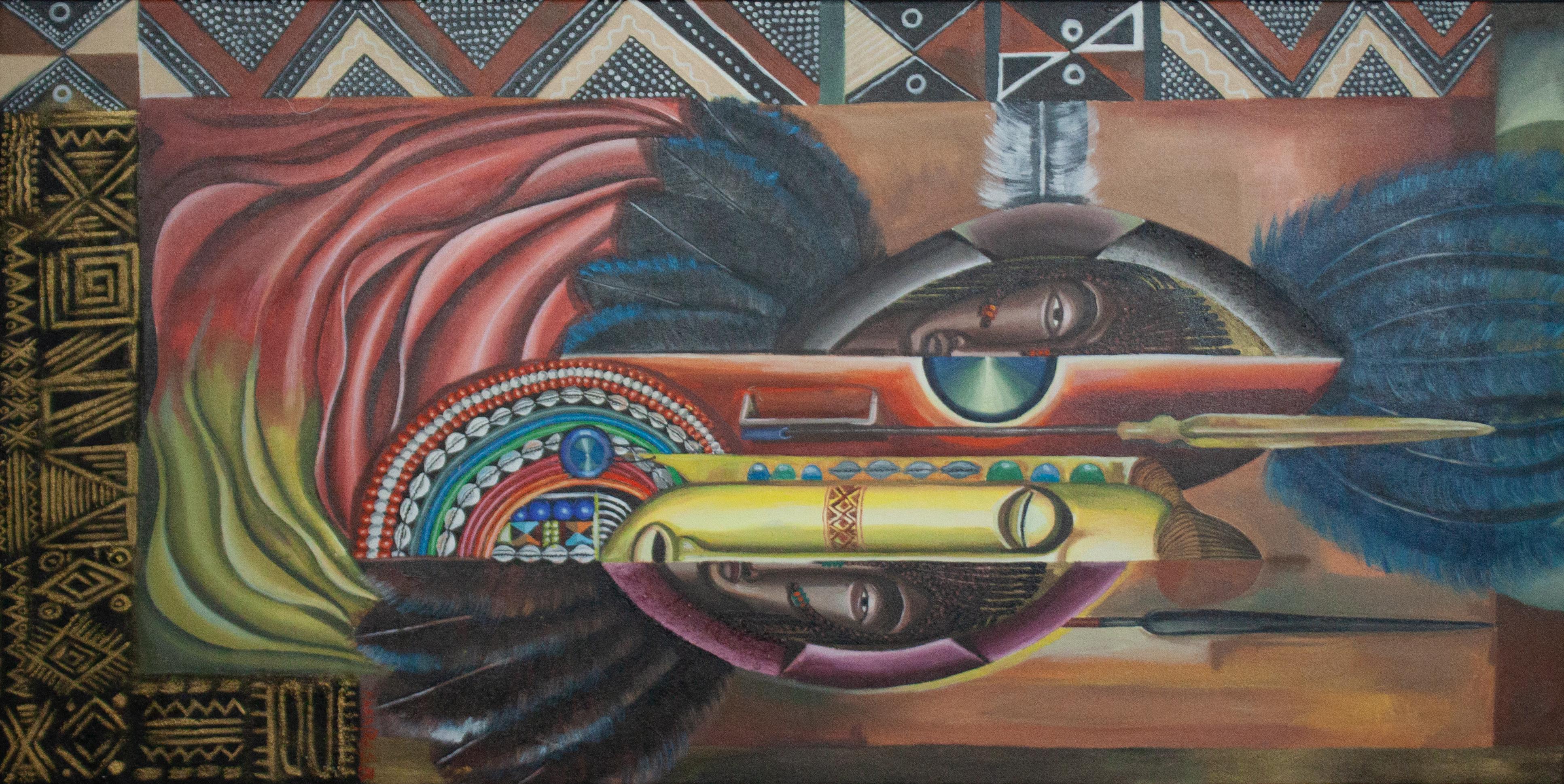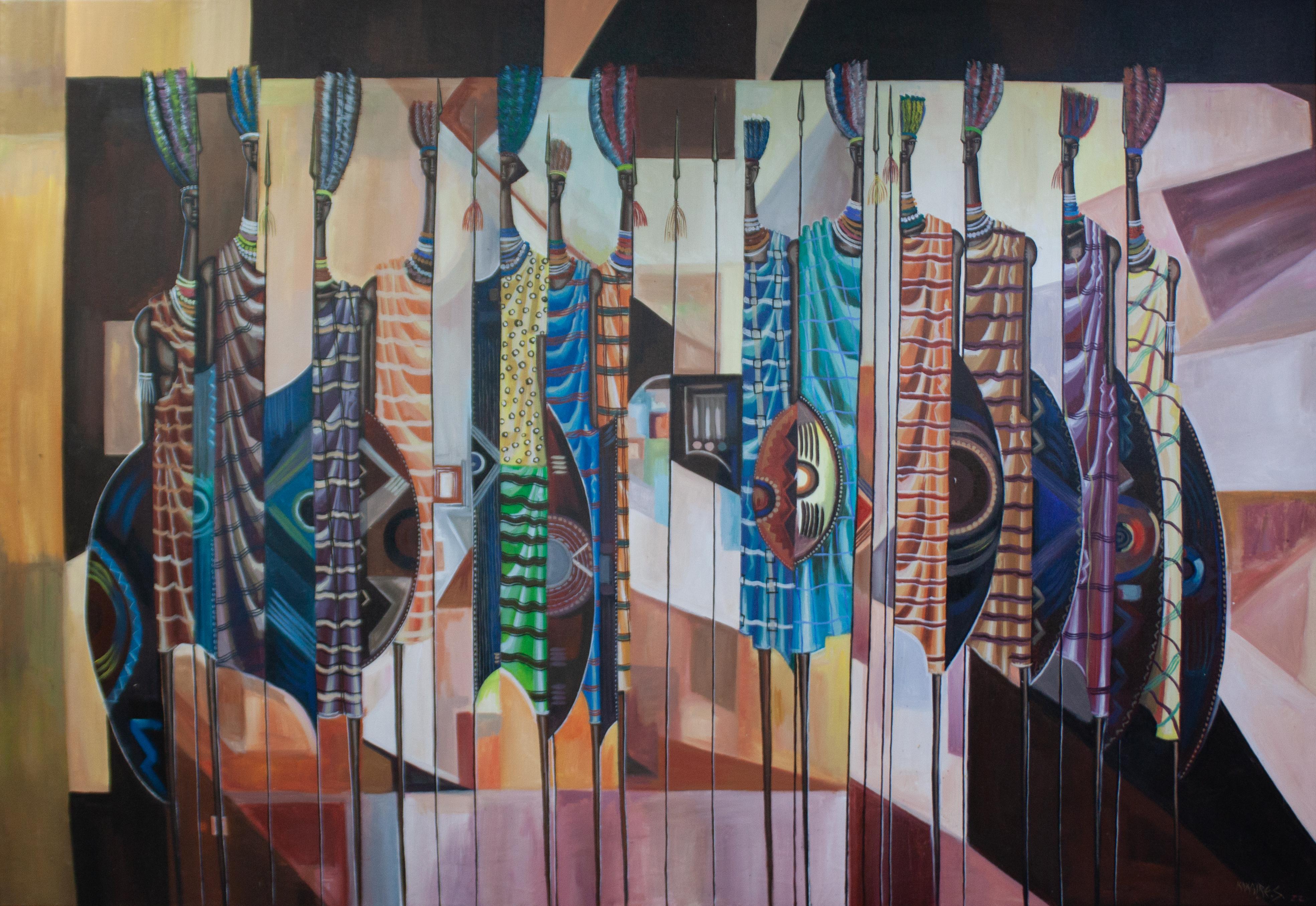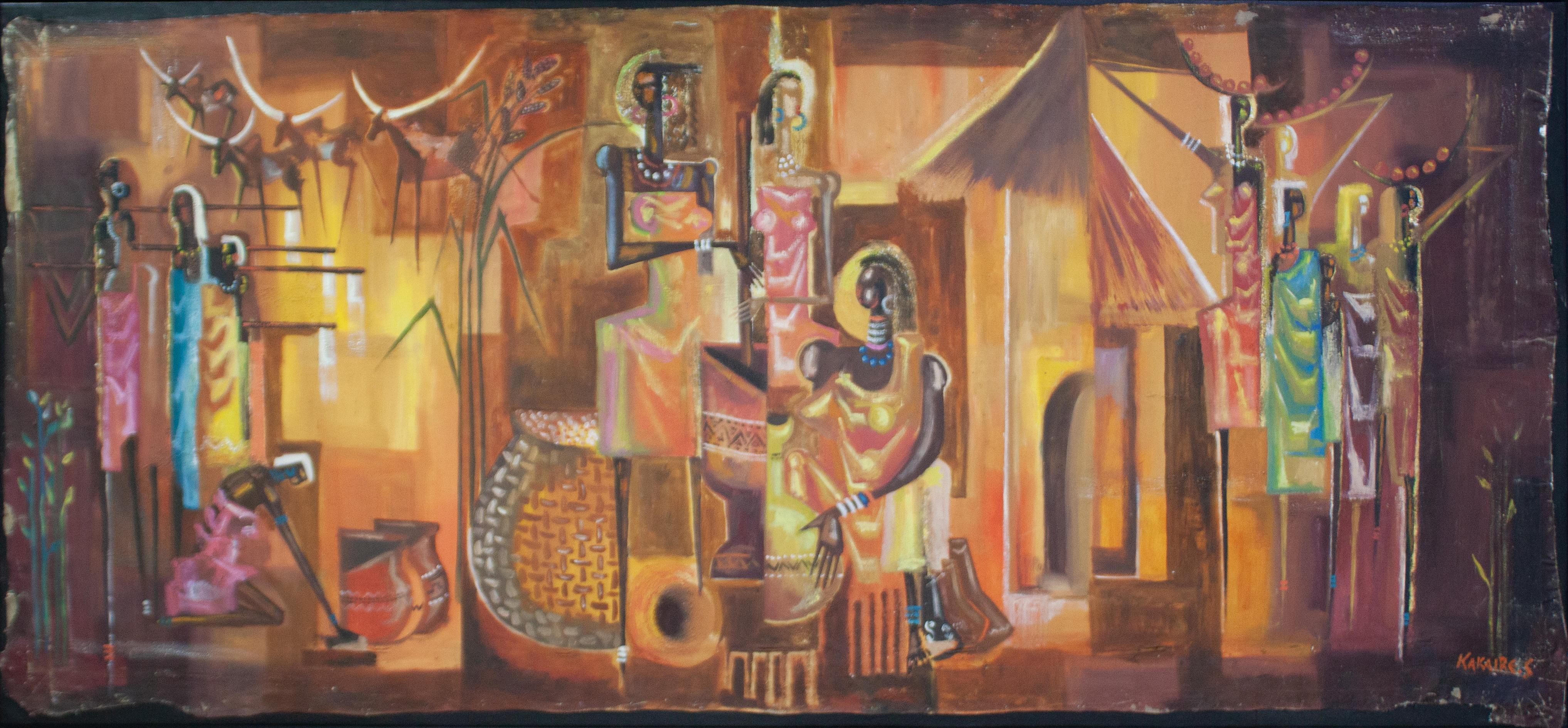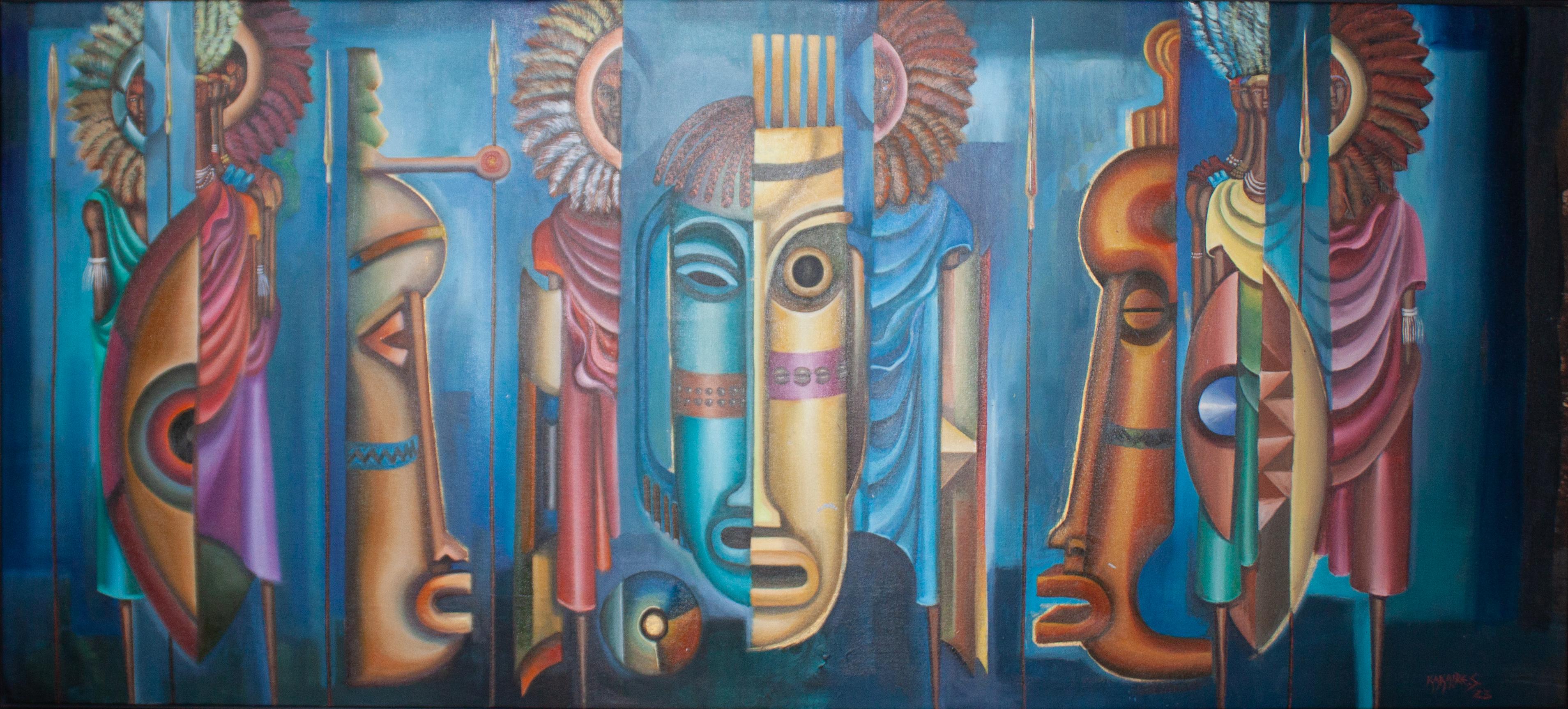Samuel Kakaire
About the Artist
Kakaire is a painter whose career mirrors Uganda’s post-civil war (1986) cultural revivalism, that was mediated by artists’ exposure to influences from external sources. Kakaire represents a cohort of Ugandan artists who benefitted from the post-civil war reconstruction packages awarded to the government of Uganda through cultural exchange and educational programs. Studying in Russia was both a revelation and a challenge to Kakaire, who came to appreciate the wealth of his own culture as a resource for an aspiring African modernist. To appreciate Kakaire’s contribution to Uganda’s visual vocabulary, it is important to give a brief history of Uganda’s modern art, particularly after independence.Uganda’s visual landscape has been shaped by changes in the political climate, training (or lack of it) as well as influences from iconic figures on the local and international art scene. The political tensions that followed from the unsettled political question of cultural institutions’ sharing of power with the central government complicated Uganda’s political landscape during the independence decade. Before too long, monarchies were abolished (1966) and cultural institutions were subdued in the new republic structure. Monarchies had provided a strong foundation for self-identification within a modern nation state. The intellectual climate especially at Makerere, the most influential university in the region and else-where in the country, resounded with debates about indigenization. With the monarchies out of the way, art became relevant more than ever before in keeping the cultural consciousness alive.Born in 1961 Kakaire was too young to understand the contestations and cultural struggles Ugandans were going through in the 60s. Culture as a vital element for social development remained on the fringes for the next two decades—during the despotic regime of Idi amin in the 70s and Obote’s second term (1981-1986). It was not until 1986, in the new regime of relative peace and political stability under Mr. Museveni that artists re-engaged with traditions inherited from the past as morbid subjects that had dominated the 70s and 80s had become irrelevant. More importantly though, monarchies were restored (1994) facilitating a more intimate discourse with past traditions.As earlier mentioned, Kakaire belongs to the generation of the 80s that benefitted from thecultural revivalism that thrived in a peaceful and stable political and economic environment. As security and economy improved, Uganda was more frequently visited by foreign artists as also opportunities for travel opened up and young people studied in foreign universities. Kakaire went to Russia where he was exposed to visual practices that valued their history. In their work, Russian modernists expressed their awareness of Christian iconography and other forms of cultural manifestations. With his Christian background, Kakaire was attracted to the Christian iconographical images. The intensity with which they were created strengthened his own belief in the Soga culture. Their sense of elegance and gracefulness captured his imagination.Upon his return to Uganda after graduation, Kakaire decided that he wanted to be a full-time painter. As the economy was now stable, the prospects of a free-lance artists in Uganda were indeed bright. A number of art galleries such as Tulifanya, Okapi, Cassava Republic and several others had opened up, complementing the historical Nommo Gallery (1964) and the Makerere Art Gallery (1969). Kakaire’s schematization and attenuation of human figures were a curiosity unfamiliar to the Ugandan audience that was used to observation drawing. He expanded the range of possibilities in painting with his transposition of the Russian iconic religious figures to the Ugandan secular subject matter. His canvases are populated with topless elegant and graceful figures. They are embellished with heavy ornamentation of bead work on the hands, torso and neck, which accentuate their erotic and voluptuous bodies. They are depicted in a tropical rural setting, carrying out domestic chores—in the waters catching fish—in the garden digging—milking cows, or simply postured to evoke a sense of dignity and human presence.In the recent years, Kakaire has diversified his repertoire of subject matter, paying attention to the fauna and flora of Uganda’s rich biodiversity. In his portrayal of wild life, he postures himself as an environmental activist. The delicate ecological balance within the natural world is evident in his paintings – and here, Kakaire returns to observation drawing with vivacity. In addition to the natural world, Kakaire has also explored mask forms which he has synthesized into abstract compositions. Masks are not part of the region’s inheritance, yet Kakaire’s affinity to them is natural. Kasumba, a respected Ugandan painter has suggested that Africans are genetically connected and he contends that if an artist like Kakaire is to create an African modernity, he must recapture the lost force that led him (the African) there, and in order to achieve this, he must subvert several of the academic rules of pictorial construction. In his mask compositions, Kakaire amalgamates poetry and visual experiences from our ordinary lives. Heproposes that, much as the present generation has not lived the life of the past or experienced it, “instinctively, one can remember things and be connected to the life he has never lived”. To that end, it is the artist’s role to help in remembering the crucial social phenomena on behalf of ancestors.Kakaire is not constrained by the predictions or expectations of conventional pictorial composition, where such considerations as perspective, matter. Complete compositions, framed in varying sizes, often populate his canvases with a resultant rich tapestry of multiple stories sometimes disjointed in content but related as an overall visual impression. Kakaire continues his search for his roots by interrogating the bark cloth, an artifact that predates colonial times. Sometimes the bark cloth becomes a surface for painting or a frame where, the paintings are bounded within the saturated browns of the bark cloth.As an enduring artist, Kakaire presents to us an enchanting new vocabulary of visual experiences which is, in part, resulting from his impact of studying in the USSR. His strong imagination and creativity is evident in the way he conjures up a diversity of visual possibilities, both tangible and intangible, both local and transnational, to remind us of our common heritage. With his skillful display of dazzling colors, Kakaire transports us into a world of splendor where we are able to celebrate our common heritage.




.svg)


.svg)
.svg)


